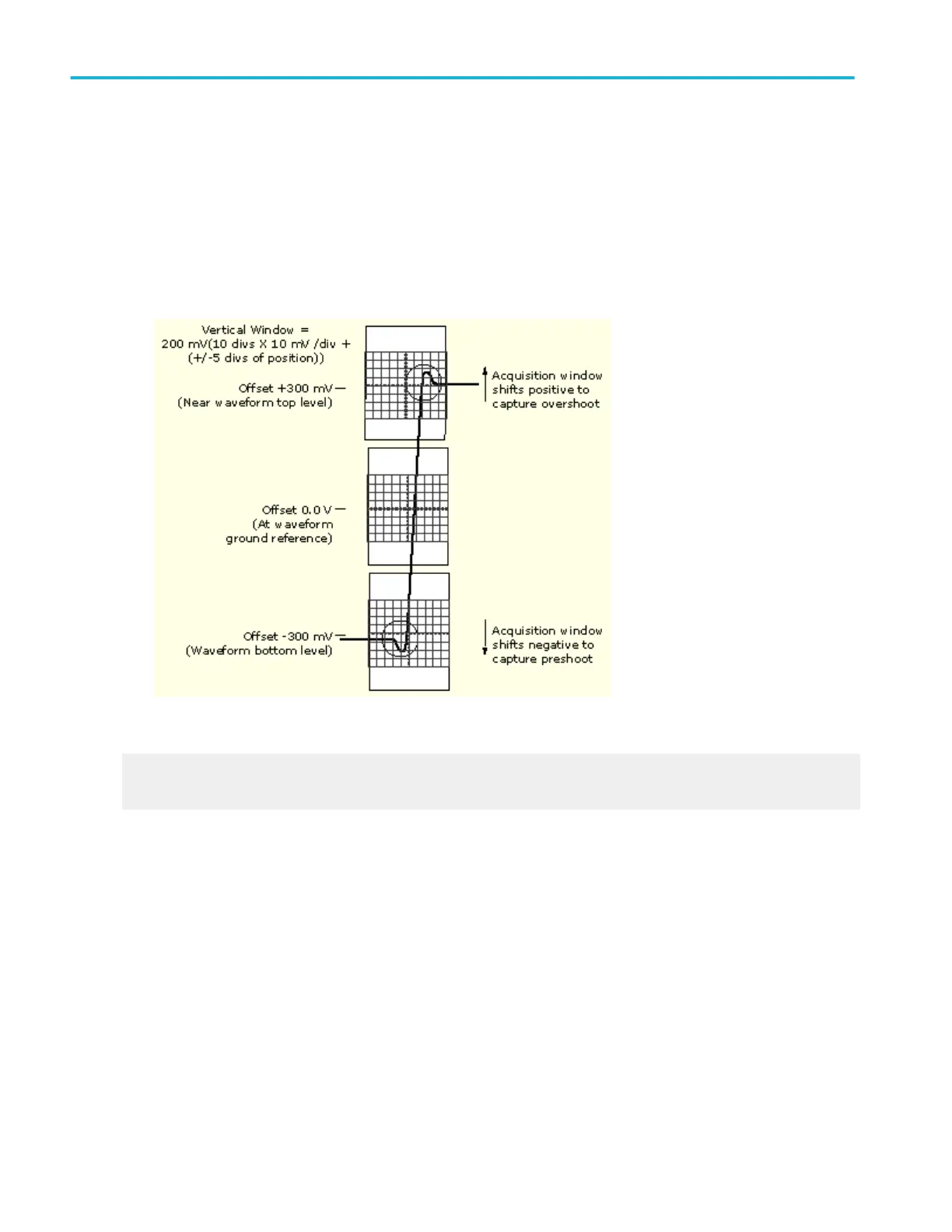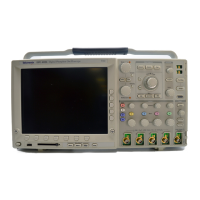■
As you vary vertical offset, the middle voltage level moves relative to zero. This moves the vertical acquisition window up
and down on the waveform. With input signals that are smaller than the window, it appears the waveform moves in the
window. Actually, a larger signal shows what really happens: the offset moves the middle of the vertical acquisition window
up and down on the input signal. The next figure shows how offset moves the acquisition window to control the portion of
the waveform amplitude the window captures.
■
Applying a negative offset moves the vertical range down relative to the DC level of the input signal. Likewise, applying a
positive offset moves the vertical range up. See the following illustration.
What do you want to do next?
Learn about horizontal acquisition window considerations.
Learn about setting offset.
Horizontal acquisition window considerations
The instrument lets you define the horizontal acquisition window parameters that determine which segment of an incoming signal
that becomes the waveform record, following acquisition. For additional information, see Waveform Record.
These common parameters specify a horizontal acquisition window that is applied to all channels in parallel. See Independent vs.
Shared Window for additional information.
These parameters are shown in the next figure (horizontal window with delay on):
■
The trigger position determines where the trigger event will be located in the waveform record. To see more pretrigger data
move your trigger position to the right on the graticule.
■
The horizontal position determines the number of pretrigger and posttrigger samples. Samples before the trigger point are
pretrigger samples and those after the trigger point are posttrigger samples. When Delay is off, the horizontal position is the
same as the trigger position.
■
The horizontal delay determines the time from the trigger point to the Horizontal Reference.
Oscilloscope reference
656 DPO70000SX, MSO/DPO70000DX, MSO/DPO70000C, DPO7000C, and MSO/DPO5000B Series

